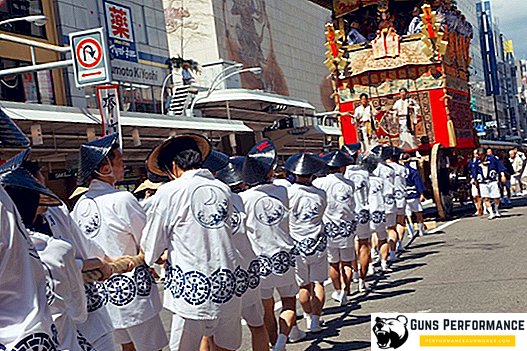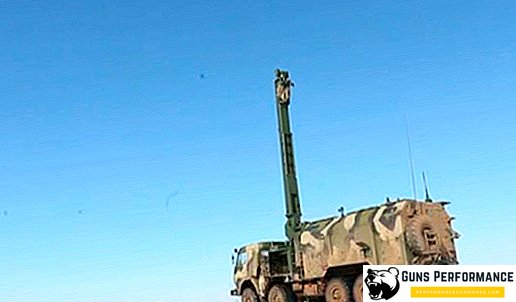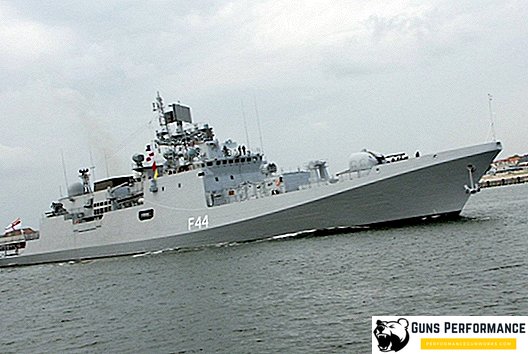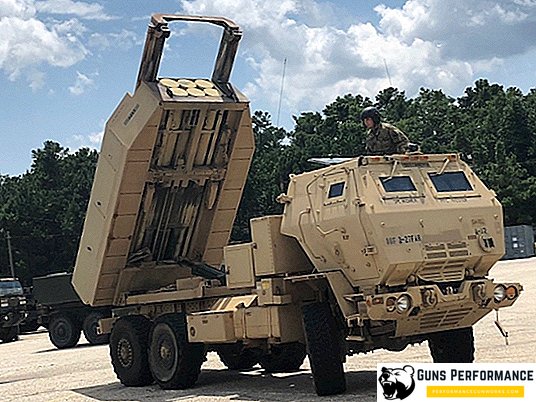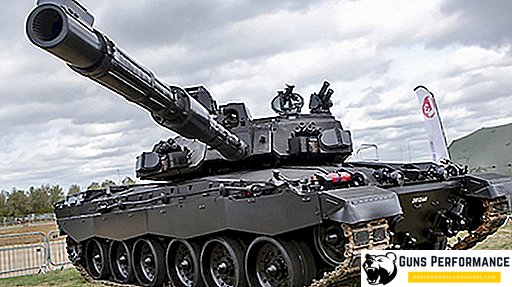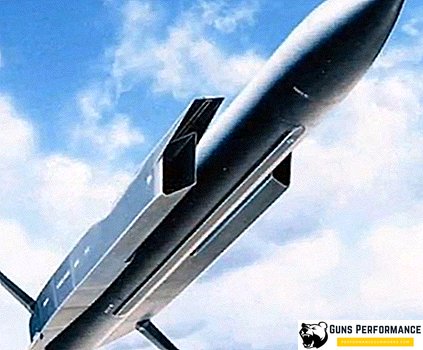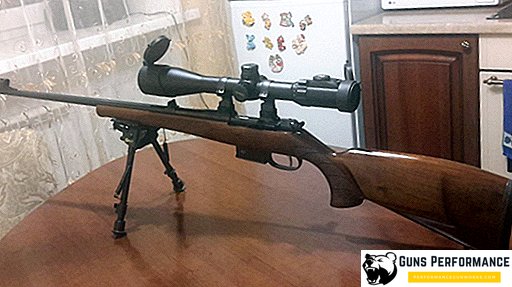Project 11661 patrol ships are designed to perform complex tasks for finding and eliminating submarine, surface and air targets, for carrying out combat service, for escorting, and for the protection of maritime economic zones. They are equipped with artillery, anti-ship, anti-aircraft and anti-submarine weapons.

It is a little from history of creation of the ships of the project 11661
Patrol ships (corvettes) and rocket ships began to be developed in the early eighties. The development was carried out by Zelenodolsk Design Bureau. The development of anti-submarine ships for coastal zones was carried out as a development of another project 1124M - a small anti-submarine ship, with Livnem - an anti-submarine missile cruiser. Then they developed two versions of tactical and technical tasks, and a year later they offered both draft designs - an anti-submarine ship with a PLRK in accordance with the 1124M project and an anti-submarine ship with a displacement of up to two thousand tons with a greater impact.
In the same year, following the changes of claims from the Navy to the project, the second project was assigned the number 11660 (and the export version - 11660E) and reclassified into a patrol ship. Analytics of research in projects showed that it was already possible to take the “watchdog” in the export version already in 1990, whereas it was possible to take the Soviet version no earlier than two years later.
Back in the mid-eighties, the requirement was made to equip sentry ships (TFR) with Uran anti-ship missile systems, which were planned to be developed in 1987. According to the December Decree of the Council of Ministers of the USSR, in 1984 it was decided to develop guard ships for project 11661. Sketch projects 11661 with propulsion systems CODOG were completed a year later.
By the beginning of 1986, they completed the technical design of patrol ships under project 11661. Later, it was decided to unify the ships of projects 11660 and 11661 by eighty-five percent, to start work and re-arrange them into a single constructive platform with various weapons, differences in engines and equipment.
In September 1986, the project 11661 began to be defended. Following the refinement of Uranus and Zarya and other equipment, the final version formulated the concept of the Basic Platform for Ship Families. To test the shape of the hull and the impact of the fairing to determine the seaworthiness created and tested the ship model. The technical project of project 11661 was approved a year later.

Then they set the task to unify the projects 11660 and 11661. With the use of the “Base Platform” concept, the Zelenodolsk Project Design Bureau began to issue working design documentation for the project 11661, as well as to develop technical projects for the project 11660.
After all approvals and approvals occurred laying ships. And in 1993, the lead ship of the project 11661 was destined to be launched into the water with the start of its completion. At the beginning of 1995 in Zelenodolsk appeared the crew of the crew for the development of a patrol ship. In the same year a refusal from several ships came from a foreign customer (according to some Indian data), and all construction work was discontinued.
In addition, in the same year, the construction of the ship with ninety-three percent readiness was discontinued. The crew was disbanded, the ship was shut down due to underfunding, and also because the customer himself (the Russian Navy) was not fully determined by the different types of patrol ships.
However, in the periods of 1995–1998, the Zelenodolsk Design and Development Bureau developed the Cheetah and Gepard-3.9 export projects for a foreign customer.
In 2001, the leadership of the Navy decided to finish building one of the ships on the project 11661K, which was to enter the Caspian flotilla with the name "Tatarstan". The ship lost its anti-submarine defense weapons. It carried out an adjustment of the project to meet all the requirements. In April 2002 in Zelenodolsk appeared the crew of the crew to seize the new ship.

At the same time, the ship was inclined with the ship and found that the displacement deviated from the calculations to one ton. In July 2002, Tatarstan managed to successfully leave the Zelenodolsk Shipbuilding Plant in order to go to the Makhachkala region to conduct test activities. The maritime test passed with five-point excitement. As a result, the ship was commissioned by the Russian Navy, and in August 2003 the Caspian flotilla acquired its flagship.
Precedents of the Cheetahs
The forerunners of the Cheetahs were the Albatross, which turned out to be small anti-submarine ships on the project 1124 with the NATO code designation - "Grisha class corvette". They were built in 1970-1980 for the Soviet Navy, which included two main series of projects 1124 and 1124M.
Samples of project 11661 - "Tatarstan" and "Dagestan"

The first-born ship in project 11661K was a ship, already known as Tatarstan, which entered service in August 2003. He was subsequently sent to the Caspian flotilla as its flagship.
The second patrol ship had a chance to become “Dagestan”. His delivery for the fleet was originally planned for the first half of 2012. However, it was transferred because of the seriousness of the damage received in January of the same year during the Black Sea mooring trials in the area of the city of Novorossiysk. After the rehabilitation and repair measures, Dagestan managed to reach the Caspian Sea to participate in the second stage in state tests on the implementation of rocket firing at the Kalibrom-NK coastal targets.
Participation in shooting at a distance of one hundred nautical miles were carried out safely. The guard ship "Dagestan" still had to participate in the parade on the Day of the Russian Navy in the city of Astrakhan. In the autumn of the same year, he was involved in the Kavkaz-2012 maneuvers, in their naval units.
However, three years later, the whole world learned about Dagestan. So, in October of 2018, at night, a shipboard strike group in the Caspian Sea carried out a massive strike with the help of cruise missiles. The blow was struck by the "Caliber NK" sea-based complex on the infrastructure of ISIS in Syria. In the composition of the six ships was and "Dagestan".
Enclosures
Ship hulls are watertight compartments in the amount of ten units. The material for their execution was low-alloy steel, and for superstructure units, an aluminum-magnesium alloy resistant to marine environments. In the event of the flooding of two adjacent compartments, the ship will remain afloat, having a course while maintaining combat capability.

Power installation and running properties
The main power plant is a twin-shaft CODOG. With a medium-speed 61D diesel engine with a power of 8,000 horsepower with the help of a complex gearbox, it is provided with all cruising modes, and with the help of two gas turbines, with a total power of 29,000 horsepower, the ship’s full-time capability is provided up to 28 knots. Electrical installation - this diesel generators in the amount of three units of 600 kW from each.
Ship crew
The crew of the patrol ship is 121 soldiers, of which 15 are officers.
Armament of the ships "Tatarstan" and "Dagestan"
The ships on the project 11661 have powerful rocket, anti-aircraft missile and artillery weapons. The main weapon of "Tatarstan" is "Uranus". This is a shock complex with anti-ship cruise missiles X-35, with a range of up to one hundred thirty kilometers.
Dagestan has a universal Caliber-NK missile system in its armament, in which several types of high-precision cruise missiles can be used. They hit surface and coastal targets with a range of up to three hundred kilometers. Of the artillery weapons - 76.2-mm art complex AK-176M and 30-mm automated twin guns AK-630M, which provide for the defeat of sea, land and low-flying air targets.
Frigates "Cheetah-3.9" - ships of new generation
Frigates of the type "Cheetah-3.9" are the ships of the new generation. They were developed by Zelenodolsk Design Bureau with an existing universal basic platform. The prototype for "Cheetahs-3.9" was a rocket ship with the name "Tatarstan" from project 11611, and "Dagestan" was the second such built domestic rocket ship, corrected at the insistence of the customer version in project 11611К.

The construction of frigates for the Vietnamese customer is still being carried out according to the established requirements of the Navy of this state. With a total displacement of up to 2,100 tons, they have a length of 102 meters, a width of just over 13 meters, and a draft of just over 5 meters. The ships have a combined diesel-gas turbine power plant (in accordance with the CODOG scheme).
With this power plant, the ships reach speed at full speed up to 28 knots, and the economic ten-node speed allows frigates to sail at a range of up to 5,000 nautical miles. Autonomous swimming is twenty days. Well-placed residential and office space, the presence of a system that conditions the air and maintains the necessary microclimate conditions will contribute to good living conditions, which is simply vital in tropical climates.
"Cheetahs-3.9" are multipurpose ships designed for patrolling in territorial waters and exclusive economic zones, attacking enemy surface targets, fire support for airborne units, and providing anti-aircraft and anti-submarine defense in escort activities.
As a result, their weapons are diverse and well balanced. They include the Urany-E anti-ship missile systems, the 76.2-mm AK-176M universal artillery mounts, and the small-caliber anti-aircraft system. Control over the management of all these weapons is carried out by the Sigma-E combat information management system that meets all the highest standards of our time. The stern of the ship has a helicopter landing pad. In addition, the helicopter has a special shelter - the hangar, which will protect it from the sea winds and unrest.

Soon the "Cheetahs" will make the transition to the Baltic Sea, where they will undergo trials. The implementation of the contract part for the construction of guard ships for the Vietnamese customer can change the correlation of manufactured products by the company. So, approximately forty percent will go to the military and sixty percent to the civilian products (previously 30% went to the military products and 70% to the civilian).
With the presence of the base platform "Cheetahs" one can not be limited to building only multipurpose ships, but it is also possible to build ships with enhanced attack, anti-submarine and anti-aircraft missiles, with a variety of power plants and electronic equipment. With the help of the same platform ZPKB developed modification of ships for patrols in the open sea, which have a greater autonomy of navigation. It is especially worth noting that the family of "Cheetahs" is relatively inexpensive compared to similar ships of foreign buildings.
Cheetahs-5.3 - frigates based on patrol ships of the project 11661
Purpose
"Cheetahs-5.3" are frigates intended for:
- Defeats air, surface and underwater enemy;
- Execution tasks when escorting;
- Conducting military service in the patrol;
- Fire support for airborne units;
- Minefield installations;
- The tasks of protecting and patrolling maritime state borders and economic zones;
- Maintenance of maritime operations;
- Demonstrations of the flag in areas that represent state interests.
Frigates are able to engage in a wide range of tasks, both in an independent mode and in the composition of tactical groups.

Armament "Cheetahs"
Strike missiles
In order to eliminate surface objects, the ships have at their disposal an anti-ship missile system "Uran-E" and four deck-mounted launchers of four missiles in each, as well as a shipboard system for firing control.
Artillery weapons
Complementing the artillery weapons of the frigate of the project "Cheetah 5.1", "Cheetahs 5.3" have two rocket and artillery complexes "Palma" and anti-aircraft guided missiles "Sosna-R".
Anti-submarine and mine weapons
Anti-submarine and mine armament "Cheetahs" expressed:
- Two twin-tube rotary torpedo tubes DTA-53 of 533 mm caliber;
- RPK-8E reactive anti-submarine complex;
- A complex of instruments for controlling the "Purge" - anti-submarine weapons.
During periods of peacetime, ships are manned with search and rescue variants of the Ka-28 or Ka-31 helicopters, and during wartime periods with anti-submarine variants.
Power plant
The main power plant is a diesel twin-shaft unit, having propellers of adjustable steps, performed according to the schemes CODAD. The main power plant includes four diesel engines with a capacity of 4700 horsepower, but it can have two diesel engines with a capacity of 6494 horsepower and two diesel engines with a capacity of 2425 3298 horsepower, two gearboxes and a local protection and control system.



